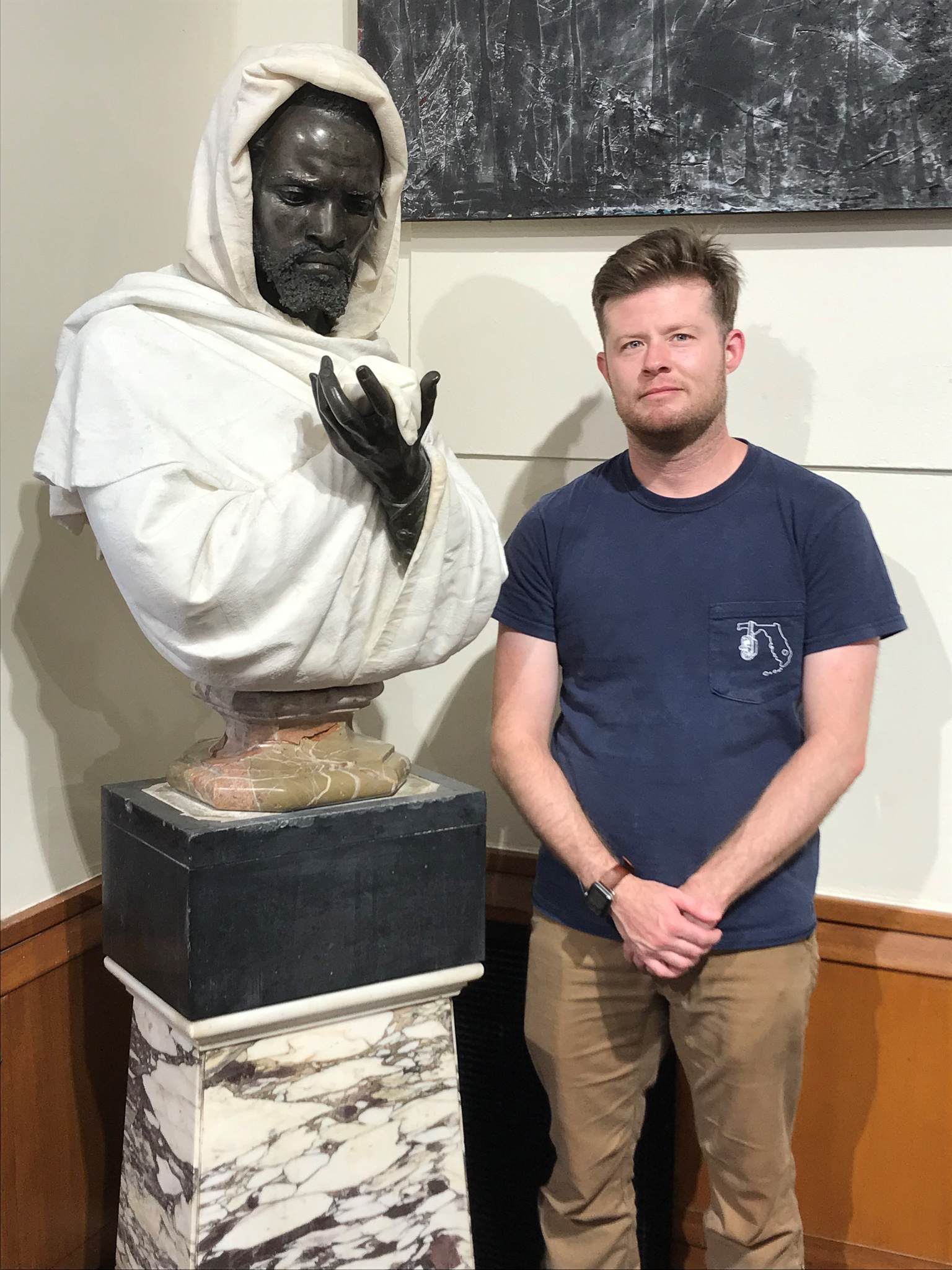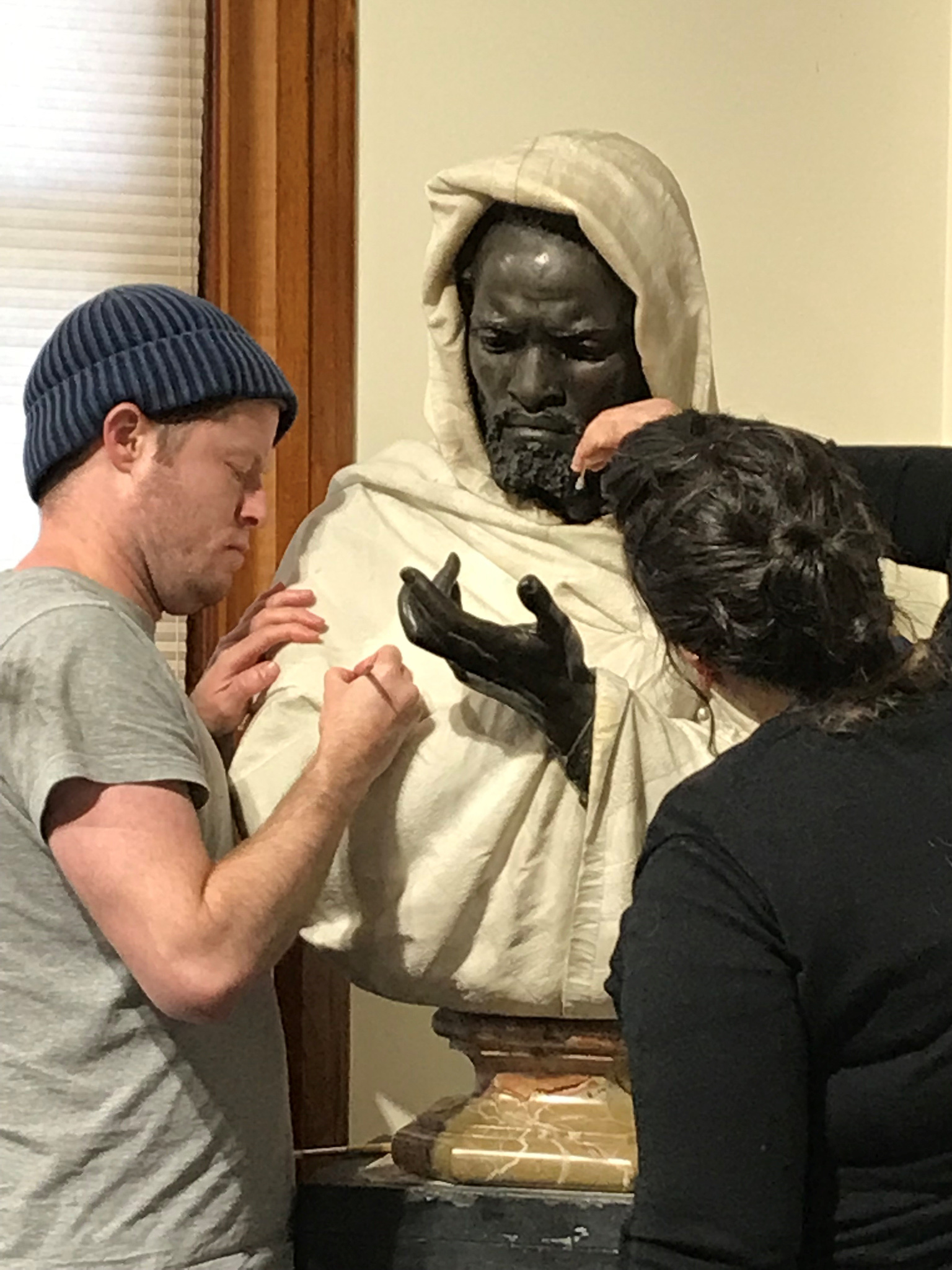<< Back to Lion homepage
Archives
Behind Closed Doors in the Archives

While the public face of the Archives has been missing during the lockdowns, much has been happening behind closed doors, including the restoration of a special work of art. Margot Vaughan explains.
Othello has had a clean.
The beautiful sculpture of marble and bronze that has stood quietly in the corner of the Cato Room at the St Kilda Road Campus for many years has been with the College since Headmaster L.A. Adamson's time. In fact, he brought it with him when he sailed from England to Australia. It was left to the school on his death in 1932.
Sculpted in Milan by Pietro Calvi (1833-1884) in 1877, Othello is the main character of Shakespeare’s tragedy about prejudice, betrayal, revenge and insecurity.
Calvi did approximately ten renditions of this sculpture, and other examples are on display in major museums in the United States and United Kingdom. It has been suggested that his model was the American actor Ira Aldridge (1807-1867), the first black man to play Othello in England - a revolution at the time. His sensitive portrayal on finding out his wife Desdemona had been faithful to him can be seen in the single tear falling down his cheek.
Decades of dust had accumulated in the marble folds of Othello’s cloak and hood, and a restoration was well overdue. Specialist art transporters were brought in to consider the movement of the heavy work to the conservator’s studio. It was decided he was too difficult to move so they came to us, bringing a micro vacuum cleaner and a steam cleaner.

After a careful and detailed inspection, the marble was cleaned first using the small vacuum. In order to get the deeper, more settled dirt off, the steam cleaner was used. Conservator Dr Evan Tindal of the Grimwade Centre for Cultural Materials Conservation describes it as using dental cleaning equipment on a much, much larger scale. The cleaning took over three days, and Othello is looking brighter, although he can never be returned to his original condition.
Time makes its mark on us all, and it is neither possible nor realistic to erase 150 years of life.
Margot Vaughan is the Curator of Collections at Wesley College